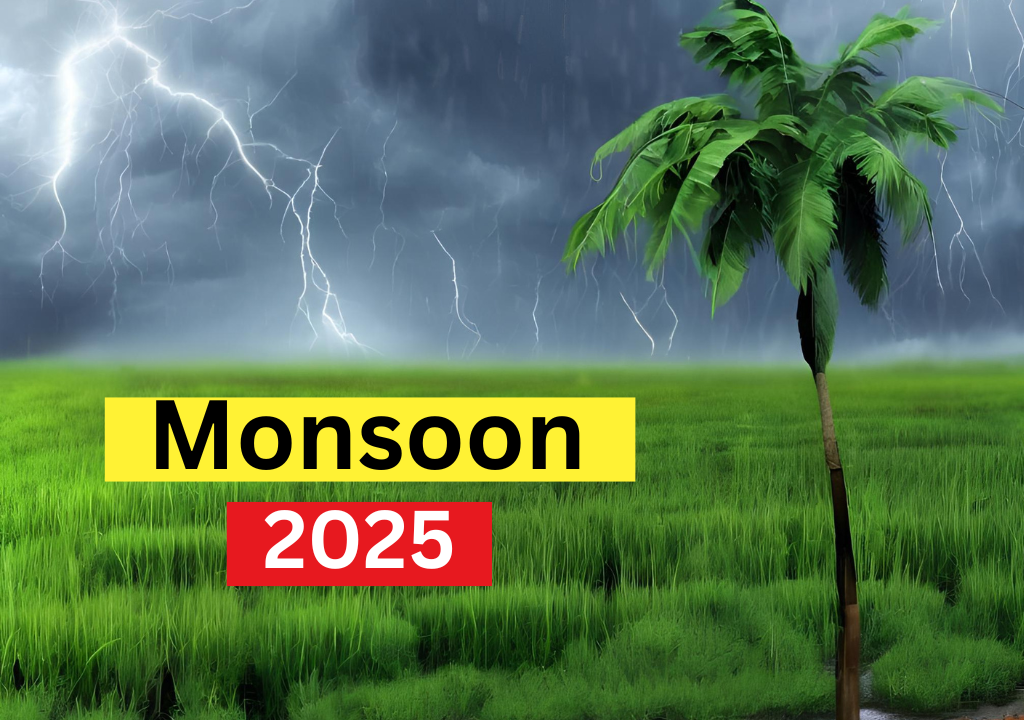The India Meteorological Department (IMD) has announced that Monsoon 2025 will arrive early in Kerala on May 27, a few days ahead of its usual onset around June 1. If accurate, this will be the earliest arrival since 2009, when the southwest monsoon hit the Indian coast on May 23. The early onset signals the beginning of the crucial rainy season, vital for agriculture, water resources, and energy generation across the country.
Monsoon 2025 Forecast and Rainfall Outlook
According to IMD, Monsoon 2025 is projected to bring above-normal rainfall, exceeding 104% of the Long Period Average (LPA). This positive outlook follows a successful 2024 monsoon season, which recorded 108% of the LPA and delivered 934.8 mm of rainfall. IMD dismissed fears of any significant El Niño impact in 2025, raising hopes for a productive agricultural year.
The season, which spans June to September, supports over 42% of India’s population engaged in farming and contributes significantly to GDP, rural employment, and food security.
Monsoon Onset Pattern and Historical Comparison
Kerala acts as the entry point for the southwest monsoon in India. The forecast of Monsoon 2025 beginning on May 27 marks a potential shift from the average date of June 1. In the past five years, early arrivals were seen in 2022 (May 29) and 2024 (May 30). With favorable conditions developing over the Arabian Sea and Bay of Bengal, the IMD predicts a swift advance across southern India in the coming days.
Monsoon Progress as of Mid-May 2025
The IMD reports that the southwest monsoon has already advanced over parts of the south Arabian Sea, Maldives, Comorin area, South Bay of Bengal, and the Andaman and Nicobar Islands. Within the next few days, it is expected to cover central Bay of Bengal and northeast Bay regions. This rapid progression reinforces forecasts of a robust Monsoon 2025.
Withdrawal from northwest India usually begins by mid-September and concludes by mid-October, ensuring a nearly four-month-long season.
🔗 Also Read: Indus Waters Treaty Suspension: Pakistan ‘Pleads’ With India to Reconsider »
Importance of Monsoon 2025 for Agriculture and Economy
A strong Monsoon 2025 will play a pivotal role in agricultural productivity, especially for rain-fed crops such as rice, pulses, and oilseeds. It also directly impacts food inflation, rural spending, and commodity prices. Farmers rely heavily on timely and evenly distributed rainfall for sowing and irrigation cycles.
Additionally, the monsoon refills India’s reservoirs and groundwater levels, supporting drinking water supply and hydroelectric power output. Urban centers facing water shortages will benefit from early rains, and industries dependent on water-intensive processes will see reduced operational risks.
Monsoon and Market Sentiment
Experts believe Monsoon 2025 will influence key sectors on the stock market, including FMCG, agriculture, irrigation, and logistics. Companies producing fertilizers, tractors, seeds, and rural consumer goods are expected to benefit from increased demand and spending. Several brokerage houses have already released monsoon-focused investment strategies, betting on robust rural consumption.
Travel and Water Resilience
With monsoon conditions already affecting parts of southern India, IMD alerts for rainfall and thundersqualls remain active in Tamil Nadu, Karnataka, and nearby regions till May 24. The rainfall will help reduce heatwave conditions, improve air quality, and boost reservoir storage before the peak sowing period begins.
Tourism in Kerala and adjoining states, which relies on monsoon-based ecotourism, is also expected to benefit from the early onset of Monsoon 2025.
🔗 Also Read: Indian Fighter Jets Bomb Pakistan Air Bases »
Conclusion
The IMD’s prediction that Monsoon 2025 will arrive in Kerala on May 27 provides early relief to millions grappling with intense summer heat and drought concerns. With above-normal rainfall forecasted, India could witness a strong monsoon season that not only supports agriculture and rural income but also improves water security and energy resilience.
As the monsoon progresses over the Indian subcontinent, attention will shift to its spread, intensity, and duration—critical factors for economic planning, policy implementation, and climate management in 2025.

